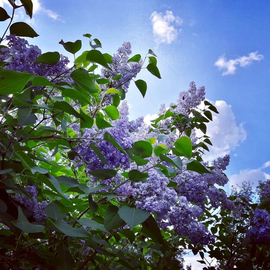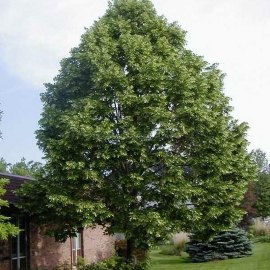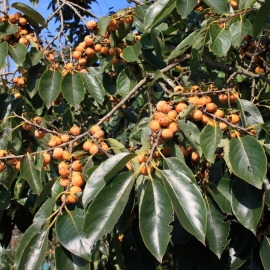






Organic Lilac seeds
1.14 €
A multi-stemmed deciduous shrub 2–8 m high, with flowers 6–10×5–8 mm, from lilac and violet to white, fragrant, long-lasting, collected in paired pyramidal, erect or drooping panicles.
-
Common lilac / Syringa vulgaris
Is a popular garden plant, the type species of the genus Lilac of the Olive family. Common lilac is a multi-stemmed deciduous shrub 2-8 meters high. The diameter of each trunk can reach 20 centimeters. The bark is gray or gray-brown, the bark of young plants is smooth.
Shoots end with two buds, rarely one. The terminal buds are thick, tetrahedral, pointed, greenish-olive or reddish, to brown-red, 6-12 mm long. Lateral buds are spaced, somewhat smaller than the terminal buds, but of the same shape and color. The scales on the kidneys are located crosswise. Outer scales 8, inner - 4. All outer scales are keeled, rounded, ending in a point, some are bordered. At the base of the shoots, the buds are small. The leaf scar is very narrow, with 6-7 traces forming one straight line, or in the form of a crescent. Oppositely lying leaf scars do not connect. Flower buds are laid on shoots from last year.
Shoots are greenish-gray or yellowish-gray, glabrous, rounded, with noticeable lenticels, numerous longitudinal narrow cracks.
The leaves are opposite, simple, 4-12 centimeters long and 3-8 centimeters wide, heart-shaped or directly cut at the base, pointed towards the apex, green, glabrous, dense, entire, with petioles up to 3 centimeters long. They fall green. In the southern regions and even middle latitudes, they remain green under the snow all winter.
Flowers 6-10 × 5-8 mm, from lilac and violet to white, fragrant, long-lasting, collected in pyramidal paired, erect or drooping panicles 10-20 cm long. The wild form has non-double, purple flowers of various shades. It blooms annually in May - early June, 20 days, from the age of four.
Pollen grains are three-furrowed, ellipsoidal, rarely spherical. The length of the polar axis is 25.5-34 microns, the equatorial diameter is 23.8-28.9 microns. Almost rounded in outline from the pole, elliptical, rarely rounded from the equator. Furrows 5-7.5 µm wide, short, with uneven edges and unevenly blunt ends; the membrane of the furrows is fine-grained. Mesocolpium width 20.4-23.8 µm, apocolpium diameter 11.9-15.3 µm.
The thickness of the exine in the center of the mesocolpium is 2-2.5 microns, near the furrows - 1.5-1.8 microns (due to the thinning of the rod layer). The rods are thin, with rounded or oblong heads, located at a distance of 1-2 microns from one another. The mekzina is 0.6-0.8 microns thick, the cover is thin. The sculpture is mesh, with rod walls; mesh cells are angular, often elongated, with a maximum diameter of 4 µm. Pollen grains are light yellow in color.
The fruit is a dry two-nested capsule up to 1.5 cm long, with several oblong and leathery-winged seeds, opening along the nests. When the box is opened, the seeds fall to the ground, often flying away from the mother plant due to the presence of a wing. Ripens in autumn.
With this product buy
Product code: 11829
1.14 €
Shrub up to 2 meters high, with widely spreading branches drooping at the ends, purple-violet flowers with a honey aroma, up to 1.5 cm, blooms annually and abundantly from July to September.
Product code: 12449
1.14 €
Deciduous tree, reaching a height of 20 - 35 (up to 45) meters with a trunk diameter of up to 1.2 meters, spreading crown, branches often drooping, flowering occurs at the beginning or middle of summer, the main pollinators are bees.
Product code: 15018
3.00 €
The tree is 15-20 meters high, berry-like with juicy flesh, yellow when grown, 1-2 cm in diameter, edible and contains a lot of sugars, malic acid and vitamins, found in food fresh, caught by frost, often dried.
Product code: 15019
5.00 €
Valuable park tree, used in steppe afforestation, decorative, drought-resistant, the most frost-resistant of all types of frame, unpretentious to soil, dust-gas resistant, frost resistance zone: 4-9 (up to -35 ° C).




